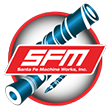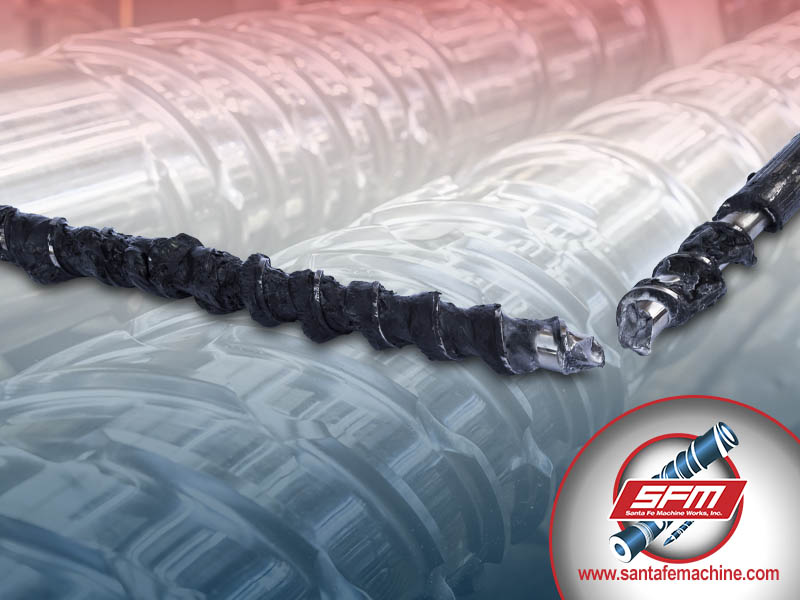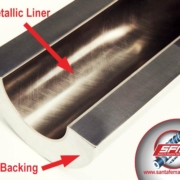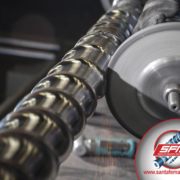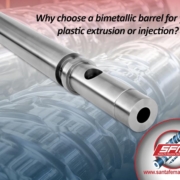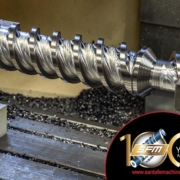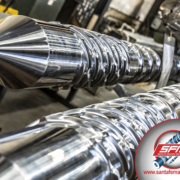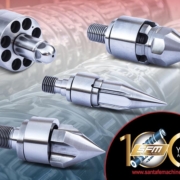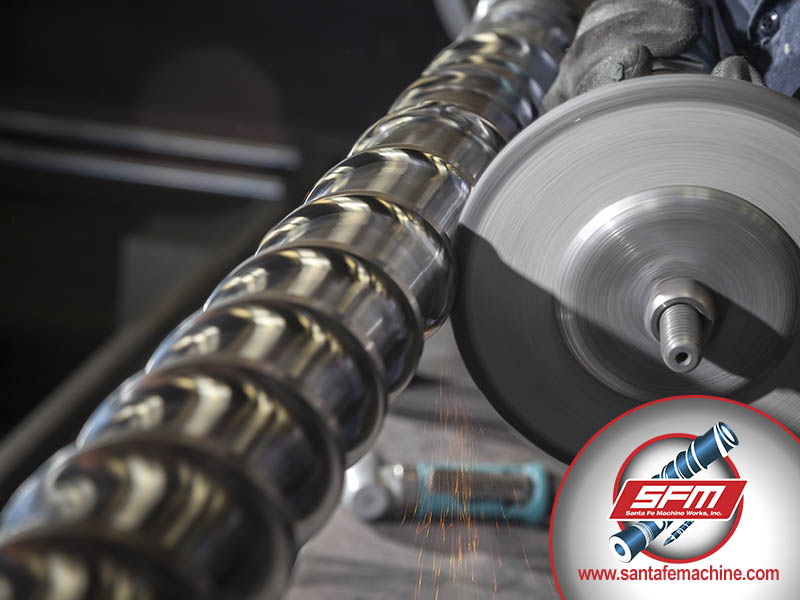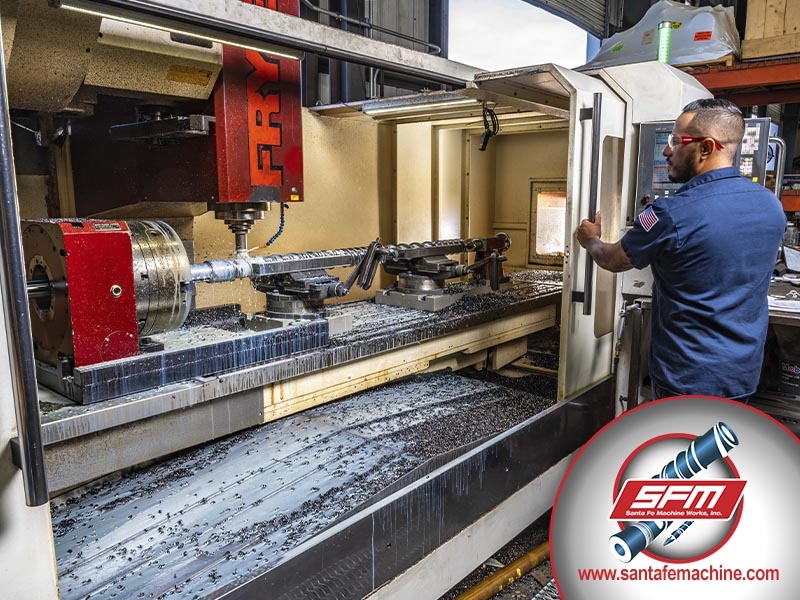Causes of extrusion screw wear & how to minimize them
Extruder screws and barrels are exposed to different wear and corrosion environments as they operate. The first sign of wear is typically a maximum processing flow rate reduction. The screw is designed to rotate within the barrel and, as such, has a threaded flight lead diameter that is only slightly smaller than the barrel diameter so that it can rotate freely. During operation, the gap between the screw and barrel fills with molten polymer which acts as a lubricant. When processing non-abrasive polymers and maintaining proper screw and barrel alignment, you can expect many years of continuous operation with little to no wear. However, corrosive additives, abrasive polymers, and improper machine maintenance will cause wear issues, particularly on the screw.
Wear factors include:
- Cold starting
- Uneven heating
- Improper material processing
- Abrasive additives in the polymer
- Improper screw and barrel alignment
- Screw not straight in the barrel
- And much more
All of these wear factors are caused by three things: abrasion, corrosion, and adhesion.
1.) Abrasion
Abrasion and abrasive wear is caused by hard additives or particles that have been added to the polymer being processed. These include particles such as calcium carbonate, flame retardants, glass fibers, and more. These particles slide against the screw at high temperatures and pressure as the polymer is extruded. The amount of abrasive wear depends heavily on the hardness, shape, and size of the particles in the polymer.
How can abrasion and abrasive wear be minimized?
Abrasion and abrasive wear can be minimized through surface hardening of the barrel and screw.
2.) Corrosion
Corrosion and corrosive wear is caused by additives in the polymer that are corrosive and cause degradation to the extruder components. This happens more frequently in the metering zone, where temperatures are higher, and the polymer remains for a longer period of time.
How can corrosion and corrosive wear be minimized?
Corrosion and corrosive wear can be minimized by using the correct barrel lining materials and the correct screw material.
3.) Adhesion
Adhesion and adhesive wear is caused by metal-to-metal contact between the barrel and the screw. This momentary contact between the screw’s flight and the barrel while the screw rotates causes galling in which the screw is immediately broken by the rotation.
How can adhesion and adhesive wear be minimized?
Adhesion and adhesive wear can be minimized by maintaining the correct alignment of the screw in the barrel and maintaining the proper straightness of the extrusion screw and barrel.
Warning Signs of Wear
No matter the cause of the wear, the first signs of wear problems will manifest in the flow rate of the processed material. The amount of wear present is directly proportional to the total output flow rate of the material. Meaning more wear = more material leakage. If ignored, the speed of the screw’s rotation will need to be increased in order to maintain the correct flow rate and discharge pressure.
Another warning sign of wear is an increase in polymer temperatures. This can cause thermal degradation of the polymers themselves if they reach a temperature too high for the specific polymer or if the polymer is left at high temperatures for too long. This can weaken or break macromolecule bonds and lead to the loss of mechanical or optical qualities of the extruded polymer.
How can we help you?
Since 1923, the doors have been open at Santa Fe Machine Works, Inc. For the past 45 years, we have been dedicated solely to manufacturing and supplying new & rebuilt injection & extrusion screws, barrels, and valves to the plastics industry. We offer custom-tailored screw, barrel, and valve combos allowing our customer’s production goals to be met in the best, fastest, and most cost-effective ways possible. Our employees have over 200 years of combined experience in the plastics industry, be assured we can support your needs. Have a question, need assistance, or looking for a quote? Contact us today!
